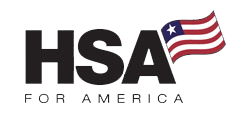Health Savings Accounts (HSAs) are powerful tools, especially if you’re a high-income earner.

You might already be familiar with HSAs, but do you know how much they can really do for you? These accounts are more than just a way to save money for medical expenses—they can actually play a big role in your overall financial strategy.
In this article, you’ll discover why HSAs are particularly valuable for people in higher tax brackets like you. We’ll explore simple yet effective strategies to maximize the benefits of your HSA.
You’ll learn how to take advantage of immediate tax savings, save on premiums—enough to cover a nice car payment or add to your mortgage—and how to grow your HSA into a significant nest egg over the next 20 or 30 years.
By the end of this article, you’ll see how an HSA can be one of the smartest financial moves you make.
Understanding the Basics of HSAs
What is an HSA?
A Health Savings Account (HSA) is a special type of savings account designed just for healthcare expenses.
But it’s not like your regular savings account. An HSA is only available if you have a specific kind of health insurance plan called a High-Deductible Health Plan (HDHP).
These plans have lower monthly premiums but higher deductibles, which means you pay more out-of-pocket before your insurance kicks in.
The good news? With an HSA, you can save money to cover those costs.
HSAs as a Triple Tax Advantage Tool
HSAs offer three big tax benefits, making them a powerful financial tool, especially if you’re in a higher tax bracket:
HSAs offer a powerful triple tax advantage that makes them especially valuable for high-income earners.
First, contributions to your HSA are tax-deductible, which reduces your taxable income and saves you money upfront.
Second, the money in your HSA can grow tax-free through investments, meaning any interest, dividends, or capital gains won’t be taxed, allowing your savings to compound faster.
Finally, when you withdraw funds to pay for qualified medical expenses, those withdrawals are also tax-free, meaning you never pay taxes on the money if it’s used for healthcare.
This combination of tax benefits makes HSAs a smart choice for maximizing your financial health.
Compare Pricing on the Best Insurance Plans Available
Immediate Tax Savings for High-Income Earners
Maximizing Contributions
One of the biggest benefits of an HSA is the ability to contribute pre-tax dollars, which can significantly reduce your taxable income.
As a high-income earner, you’re likely in a higher tax bracket, so every dollar you contribute to your HSA lowers the amount of income that’s subject to tax.
For 2024, the contribution limits are $4,150 for individuals and $8,300 for families, with an additional $1,000 catch-up contribution allowed if you’re 55 or older. By maxing out your contributions, you’re taking full advantage of these tax savings, which can add up to thousands of dollars each year.
High Marginal Tax Rate Benefits
The higher your income, the more valuable these tax deductions become.
For example, if you’re in the 35% tax bracket, every $1,000 you contribute to your HSA saves you $350 in taxes.
Compare this to someone in a lower tax bracket, like 22%, who would only save $220 for the same contribution. The more you earn, the more you save, making the HSA an especially attractive option for high-income earners like you.
Choosing a High-Deductible Health Plan (HDHP)
To have an HSA, you need to be enrolled in a High-Deductible Health Plan (HDHP).
These plans typically have lower monthly premiums compared to traditional health insurance plans, which means you pay less each month for your health coverage.
For high-income earners, this lower premium can translate into substantial savings over the course of a year. While the trade-off is a higher deductible, the savings on premiums can more than make up for it, especially when combined with the tax benefits of an HSA.
The money you save on premiums with an HDHP can be redirected towards other financial goals, making it a smart strategy to maximize your overall financial health.
For example, the premium savings might be enough to cover a nice car payment, contribute to a larger mortgage payment, or even fund your HSA or 401(k) more aggressively. By reallocating these savings, you’re essentially turning the cost savings from your health plan into an opportunity to boost your investments or reduce debt.
Let’s put this into perspective with an example. Suppose you switch from a traditional health plan to an HDHP and save $300 per month on premiums. Over a year, that’s $3,600 in savings.
You could use this money to fully fund your HSA, which not only provides tax benefits but also sets aside money for future medical expenses. Alternatively, you could put that $3,600 toward your mortgage, reducing your principal and saving on interest over the long term.
How to Make Strategic HSA Withdrawals
Planning for healthcare costs is a crucial part of retirement planning.
Medical expenses tend to rise as you age, and having a dedicated, tax-free fund like an HSA can provide peace of mind. You won’t need to dip into your other retirement savings to cover these costs, preserving your wealth for other needs.
Consider this: the average retired couple may need hundreds of thousands of dollars to cover healthcare costs throughout retirement. If you’ve allowed your HSA to grow over 20 or 30 years, you could have a substantial amount set aside specifically for this purpose.
By using your HSA to cover these costs, you can protect your other retirement savings and ensure that you have enough to cover all your needs.
When and How to Withdraw
Knowing when and how to withdraw from your HSA is crucial to maximizing its benefits.
Ideally, you want to keep your HSA funds growing for as long as possible, but eventually, you’ll need to use them. The key is timing your withdrawals to get the most out of the tax advantages.
– During Your Working Years: If you can afford to pay for medical expenses out of pocket, consider saving your HSA receipts and delaying withdrawals. This allows your HSA to continue growing tax-free. You can always reimburse yourself later, even years down the line, as long as you keep your receipts.
– In Retirement: After age 65, your HSA becomes even more versatile. You can withdraw money for non-medical expenses without penalty—though you’ll pay regular income tax on those withdrawals, similar to a traditional IRA or 401(k). This means your HSA can function as an additional retirement account if you’ve built up substantial savings in it.
– For Healthcare Costs: Healthcare expenses in retirement can be substantial, from routine medical care to long-term care needs. Using your HSA for these expenses allows you to withdraw money tax-free, making it a powerful tool for managing healthcare costs in your later years.
Coordinating HSAs with Other Retirement Accounts
HSAs, 401(k)s, and IRAs each offer unique benefits, but understanding how to coordinate them can significantly enhance your retirement strategy.
Given the unique tax advantages of HSAs, it often makes sense to prioritize HSA contributions before maxing out your 401(k) or IRA. Here’s how you can approach it:
- Contribute to Your HSA First: Max out your HSA contributions each year to take full advantage of the tax benefits. This ensures you have a dedicated, tax-free fund for future healthcare costs.
- Max Out Your 401(k) Contributions: After contributing to your HSA, focus on maximizing your 401(k) contributions, especially if your employer offers a matching contribution. This helps you build a substantial retirement fund while also reducing your taxable income.
- Consider IRAs for Additional Savings: If you’ve maxed out both your HSA and 401(k), consider contributing to an IRA (Traditional or Roth, depending on your income and tax situation) for additional tax-advantaged savings.
By coordinating these accounts, you’re creating a diversified retirement strategy that takes full advantage of the tax benefits offered by each type of account.
Estate Planning Using Your HSA
HSAs also play a role in estate planning, though it’s important to understand how they differ from other retirement accounts in this regard.
If you name your spouse as the beneficiary of your HSA, they inherit the account and can continue using it tax-free for medical expenses. However, if someone other than your spouse inherits the HSA, the account is liquidated upon your death, and the funds are taxed as income to the beneficiary.
In contrast, 401(k)s and IRAs can be passed on to any beneficiary, with the funds generally being rolled over into an inherited IRA or taken as a lump sum (with associated tax implications). These accounts may offer more flexibility in estate planning, but they lack the unique tax-free withdrawal benefits for medical expenses that HSAs provide.
Compare Pricing on the Best HealthShare Plans Available
HSAs for High-Income Earners Conclusion
Health Savings Accounts (HSAs) are a game-changer for high-income earners, offering an unbeatable combination of tax benefits and long-term financial growth.
With tax-deductible contributions, tax-free investment growth, and tax-free withdrawals for medical expenses, an HSA is the most powerful tool in your financial arsenal. If you’re serious about maximizing your wealth while reducing your taxable income, opening an HSA should be your next move.
Don’t wait to take advantage of the unique benefits that an HSA offers. Whether you want to save thousands on taxes, build a robust nest egg, or ensure financial security for your future healthcare needs, an HSA is the key to unlocking your financial potential. Act now and set yourself up for a more secure, financially sound future—starting with a Health Savings Account.
Ready to get started? Reach out to one of our Personal Benefits Managers.
Here are some additional articles on healthsharing programs: How To Fix The Most Common HSA Mistakes | Using Your HSA for Transportation Expenses
Here are some additional pages related to this article: HSA Insurance Plans | Health Savings Account Administrators

Wiley is President of HSA for America. He believes that consumers should have choice and price transparency, so they can make the best healthcare decisions for their needs. Read more about Wiley on his Bio page.


